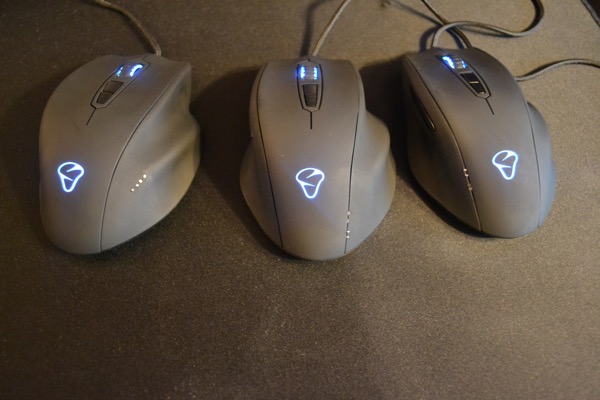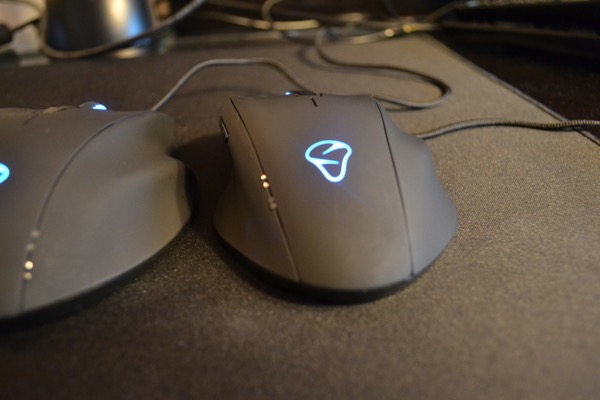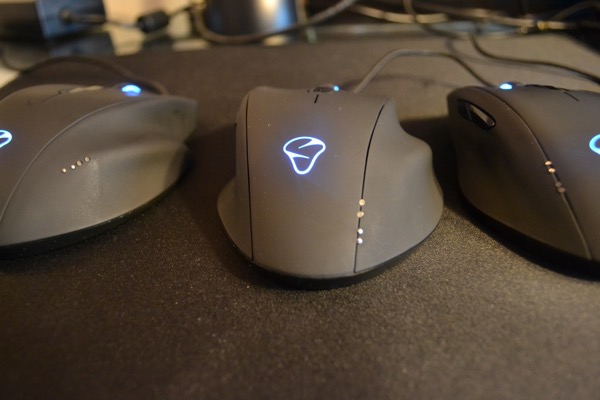Taking The Pulse: Hands On With Mionix's NAOS QG
Every year, new gaming mice are released, complete with new gimmicks, typically less weight, more buttons or interchangeable parts. At CES, Mionix took a different approach with their latest gaming mouse, the NAOS QG. Unlike other gaming mice, the NAOS QG includes a sensor that measures your heartbeat, skin response, movement data, and actions per minute, and then displays it during gameplay. This was the first time that a mouse was created with this type of software for gamers, making it a really interesting gaming peripheral. I met with Mionix to try out the NAOS QG and see how it would work during gameplay.
The four sensors are very noticeable on the mouse's surface, as they slightly stick out for skin contact and are metallic, rather than the smooth, matte plastic finish of the mouse. When I met with Mionix, the sensors were placed in different areas on three different mice. The reason behind the different locations is because the company is still attempting to find the best spot for the sensor, one that accommodates any hand placement.
The data gathered certainly points to its most likely target customer, the eSports player. Actions per minute is an old measurement used in eSports to measure the number of keys pressed in a minute, but in the case of the NAOS QG, it measures the number of times the mouse is clicked. Movement data is another eSports measurement that tracks how far you move the mouse across the pad. The other two measurements stand out because they are so odd. Skin response detects how much your hands sweat during the game — to get a sense of the intensity of what you're playing. Meanwhile, heartbeat keeps track of your beats per minute and provides a visual line of your heartbeat (similar to an EKG machine).
I played with the mouse during a short session of Borderlands 2. When I placed my hand on the mouse, I felt the sensor at the top of my palm between my right ring and pinky finger, or in terms of looking at the mouse, right between the ring and pinky finger grips on the mouse. Surprisingly, I barely felt the sensor as I moved the mouse across the screen. On the monitor was a slightly opaque circle that showed my heartbeat data. Since Borderlands 2 includes a co-op feature, I was also able to see the heartbeat data of the other players in the room in their own circles.
For the most part the mouse was able to register my heartbeat. It was incredible to see my heartbeat spike and fluctuate according to the current situation, whether it's fighting multiple enemies or sneaking through them undetected. However, it wasn't a perfect experience. There were times when I was completely immersed into the game and didn't notice that my hand was slightly rising from the mouse and no longer in contact with the sensor. I had to constantly remind myself to stay in contact with the sensor, which distracted me from the game, or in the case of a professional eSports gamer, a crucial play during a tournament.
At the time, only the heartbeat data was functioning for the game, but I was also able to see all four data sets in action on a non-game demo. The mouse immediately began gathering data as soon as I touched it, and it instantly stopped functioning when I lifted my hand away from the sensor.
With eSports players, the NAOS QG could be a game changer in competitions. Not only can the data be viewed in real time by every player, it can also be recorded and reviewed after each round, which could improve team performance. The developers also talked about using it on gaming livestreams. The data will be displayed on-screen and provide viewers with a more entertaining experience as they watch the player's heartbeat jump during a scary scene or dangerous scenario.
Get Tom's Hardware's best news and in-depth reviews, straight to your inbox.
Mionix is also looking for support from customers and game developers in terms of mods for the software, which is why the company made it an open API. The hope is that not only will the idea of biometric data gathering catch on in games, but also that people will come up with their own ideas as to what they want to see measured during gameplay. The applications of the mouse might be limited now, but with enough support from the community, there could be untapped avenues that could use the talents of the NAOS QG. It just needs a little push to get going.
At the time of this writing, Mionix is still in the middle of a Kickstarter campaign for the NAOS QG. With only five days to go, the team needs an additional $1,500 to reach its $100,000 goal, and if successful, the company plans to make it available around August or September for $129.
Follow Rexly Peñaflorida II @Heirdeux. Follow us @tomshardware, on Facebook and on Google+.
Rexly Peñaflorida is a freelance writer for Tom's Hardware covering topics such as computer hardware, video games, and general technology news.
-
Heironious MIONIX is the best unheard of company for peripherals. I am the proud owner of the MIONIX NAOS 7000 mouse and omg. Most comfortable mouse ever. MIONIX has won a lifer customer with me.Reply -
zthomas wish you would show the bottom of the gaming mice .. really important.. some idiot manufactures put stickers and such underneath.. that collect crap.. that gum up the worksReply




